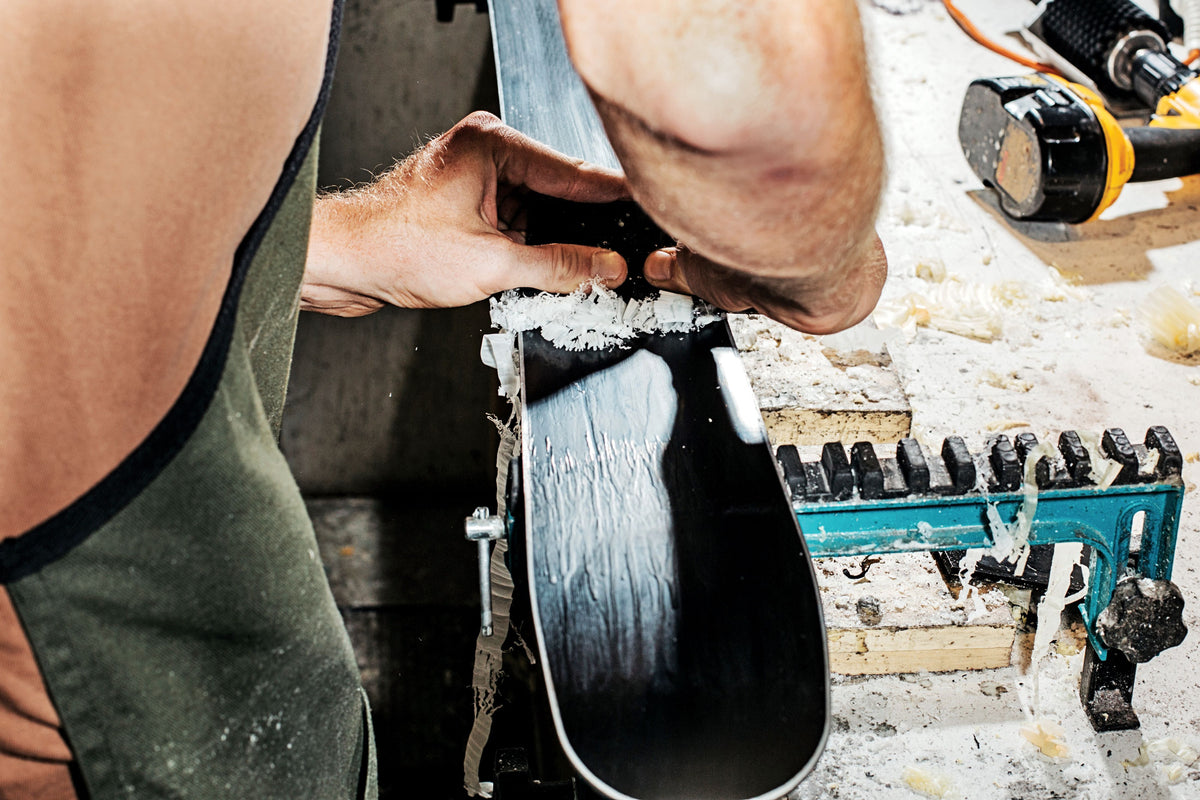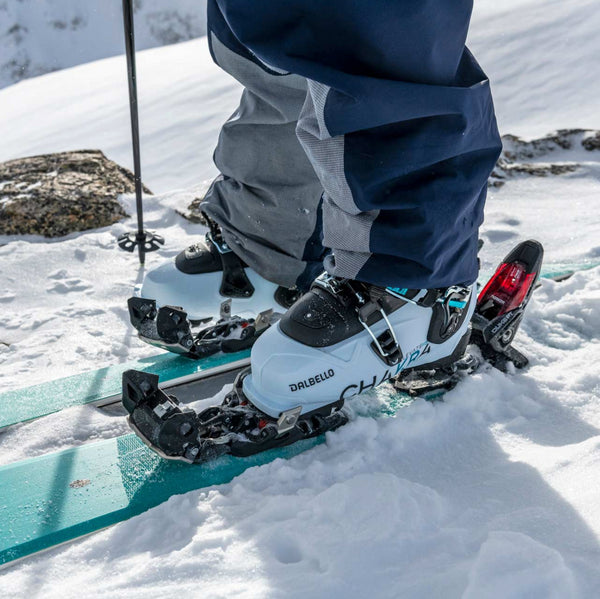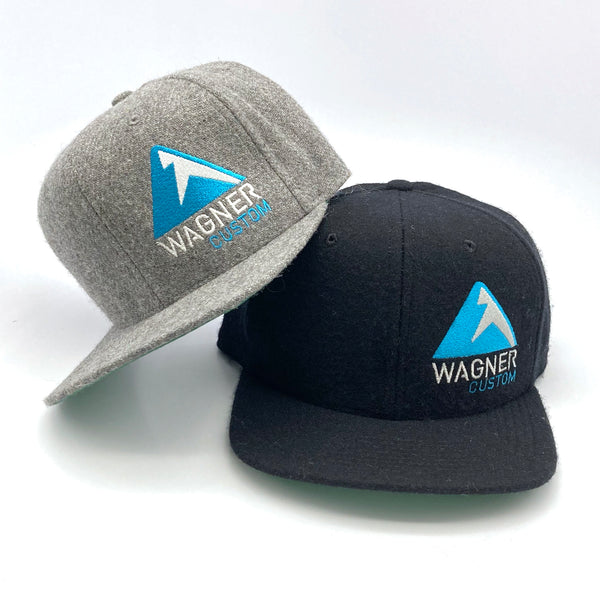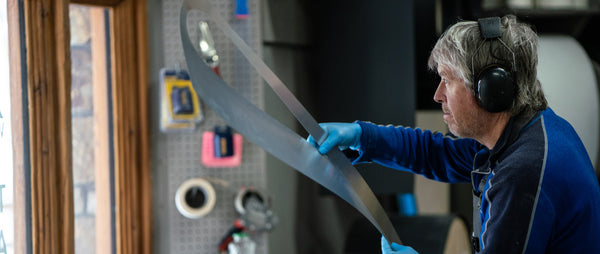
Maintaining Your Skis
Skis, in general, are tough. Wagner skis are built even tougher, with double-thick edges and bases. But skis do need regular maintenance.
After all, you ski them over abrasive snow, ding them on rocks and stumps, and expose them to the elements. Here’s what you need to do to keep bases and edges fresh.
-
When traveling, even walking to the lift, fasten skis with a proper Velcro ski tie and never let the steel edges scissor. It dulls them.
-
Store skis in a rack, held upright in a dry, shaded location with plenty of ventilation.
-
The polyethylene base absorbs wax beautifully because it’s both tough and porous. But if you let the polyethylene dry out, oxygen gets into the pores and the base oxidizes. Ever see an old ski base that looks like it’s been infested with a white powder? That’s oxidation. An oxidized base loses its gliding efficiency.

The colder the snow, the harder your wax needs to be. But you also may find that the wax you do apply lasts longer than in the spring. Using the wrong wax will be a mistake you only do once.
RULE NUMBER ONE
Rule number one is to keep your skis waxed. Use a decent quality hard ski wax (we like Swix, RaceService1, and Purl Wax), and use it frequently. Skis should be hot-waxed after every third or fourth day of skiing, and freshened up with a paste wax (Swix F4 is good) daily. If you can’t find your regular wax brand, use another brand. It’s like engine oil: any wax is better than no wax.
-
Polish your edges regularly, using a fine diamond stone. Regularly means daily, or at least every weekend. Use an accurate file guide to keep the stone aligned with the proper base and side bevel. Wagner usually ships skis with a 1º side and 1º base bevel, unless you specified another setting. If that’s the way you keep your skis tuned, set your file guide to those angles.
-
Carry a pocket stone when you ski and deal with minor burrs promptly. Untreated burrs invite rust.
-
To avoid edge rust, don’t zip wet skis into a ski bag. Dry skis thoroughly before storing or shipping.
-
To avoid edge rust and binding corrosion, never carry unprotected skis on a car roof-rack where they’re exposed to road salt. If skis have to travel short distances on the back of a van, road grime off the edges and bases promptly. Wipe them down with a wet rag and then a dry one.
-
Ultraviolet light damages plastics – it actually breaks down the long polyethylene molecules, making the plastic weaker and more brittle. Don’t expose your ski bases or topsheets to bright sunlight for hours at a time.
-
A sharp metal ski edge also damages plastics (and wood veneers). Inevitably, the topsheets of your skis will get scratched, knicked, and dinged. This is actually a good thing because it means you’re enjoying your skis. Not to worry, however, these scrapes will not reduce the performance or longevity of your Wagner Custom skis. Skis with dings and scratches have character. The interface between the topsheet and the plastic sidewalls is especially susceptible to getting cut from your metal ski edges (because we all cross our tips from time to time.) If you’ve got a lot of scratches on the edges of your topsheets, ask us about our Ski Maintenance Program.
-
Minor rock damage to the P-tex base can be cleaned up with a sharp knife. Cut away any flap or string that might drag in the snow. The gouge can be patched later. UHMW (ultra-high molecular weight) sintered polyethylene doesn’t stick easily to anything, even to a melted-in patch, so if you do the patch at home you can expect it to peel out eventually. A professionally-equipped ski shop can engineer a permanent patch.
-
Skis can be stone-ground to restore the edges and fine base structure. Use the services of a shop with a sterling reputation. Wagner skis are most versatile with a fine diagonal structure. For deep wet snow, your tuner may recommend a coarser grind. Unless you ski over a lot of rocks, skis shouldn’t need to be stone-ground more than once a year. However, you might realize performance benefits by getting a fine stone grind in the fall (for dry, cold snow conditions) and a coarser grind in early March (for wetter, warmer snow conditions). If you don’t hit rocks, a grind may last for over 100 skiing days.

How often you wax your skis is a combination of preference and snow conditions. In the spring, you may find yourself waxing your skis every other day!
If you choose to tune your own skis, this is the order of business:
1) Clean and dry the base. Fasten up the ski brakes. Use a solid ski vise.
2) Clean up burrs in the steel edge with a diamond stone. Polish the edges with your bevel tool.
3) Iron in a coat of hard base wax using a waxing iron. Don’t burn or smoke the wax.
4) Let the skis cool to room temperature.
5) Scrape the wax with a polycarbonate scraper, working tip to tail.
6) Brush the structure out with a brass brush, working tip to tail.
7) Polish off with a fiber pad, made of Scotchbrite or Fibertex material.
8) Release the brakes and fasten the skis with a proper Velcro ski tie.
SUMMER STORAGE
For summer storage, dry the skis thoroughly, clean them, repair any damage and polish the edges. This is a good time to have the bases stone-ground – make sure to request a fine, cold-snow structure that will be appropriate for next winter’s cold temperatures. Then iron in a coat of a soft wax with a low melting temperature. Pure paraffin will do, but some ski wax companies package a special base conditioner wax (we like SBC-1 base conditioner from Raceservice1). This soft wax is absorbed deeply into the base and makes a good sealer. Leave a thick coat on the base and edges for the summer and store the skis in a cool, dry, well-ventilated place. Before skiing in the fall, scrape the soft storage wax off and iron in a coat of harder or all-purpose glide wax suitable for winter snow.
The Wagner Spa Treatment
Wagner Skis charge hard all season. That’s why we always recommend sending your Wagner Custom Skis to us for a spa treatment between ski seasons. It’s a great way to upkeep your skis so they perform well into the future. Our spa treatments rejuvenate and come at the perfect time for some well-deserved relaxation. We start by inspecting your skis from tip to tail, it’s the perfect time for your skis to unwind and catch up with old and new friends at the factory. Next, we perform needed base repairs to put your skis back intact for next season. We utilize the original factory tune of the skis to enhance their longevity. Last, we buff out the topsheet-sidewall interface to restore energy and diminish stress. Your skis come back from the spa fresh, clean and skiing like new. In all seriousness, the skis return from the factory in great condition so you are ready to keep charging come next season.
If you wish to send your Wagner Skis off to the spa, submit a Spa Tune Form online (or download and print from here) and send your skis our way. Shipping instructions can be found on the form. We can either invoice you for your tune, or you can pay for it here.
(NOTE: if the links don't work, it means that we've changed our equipment over to ski production for the winter season – sign up for the newsletter to get the announcement when Spa Tunes are available again in the spring.)
--









